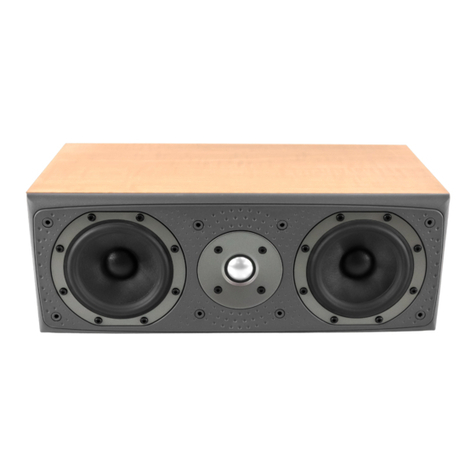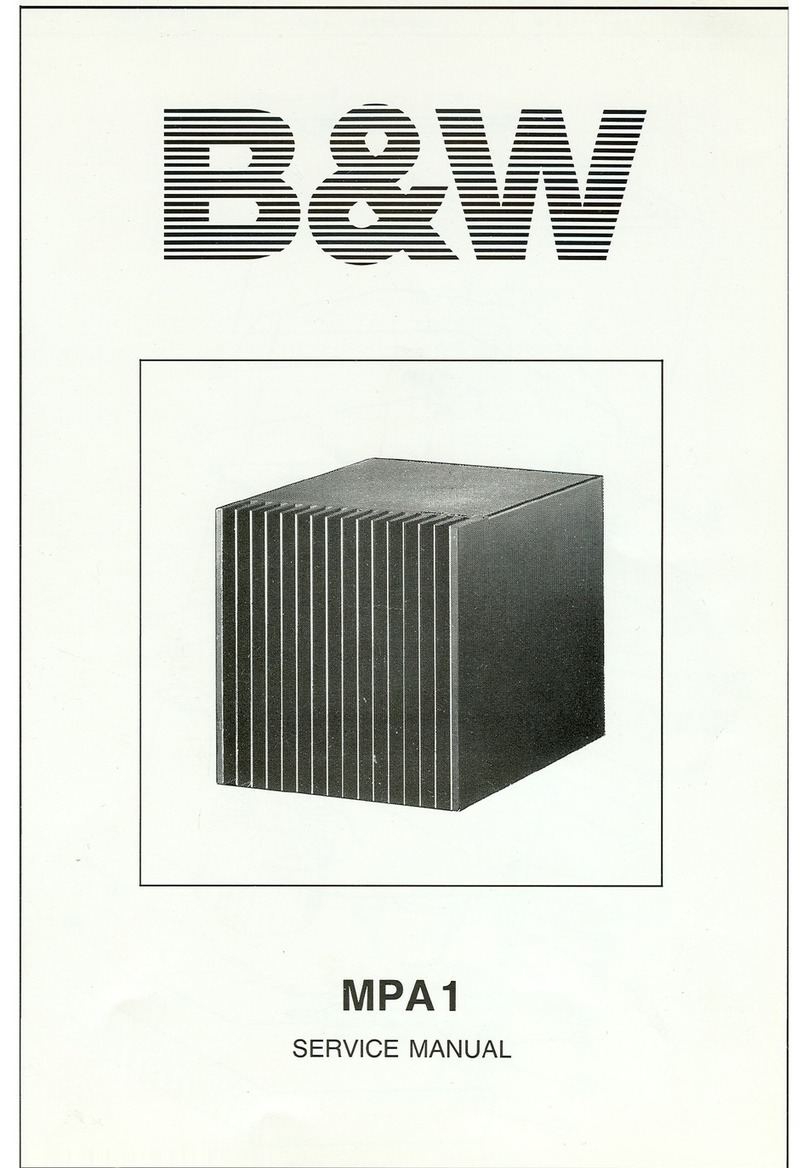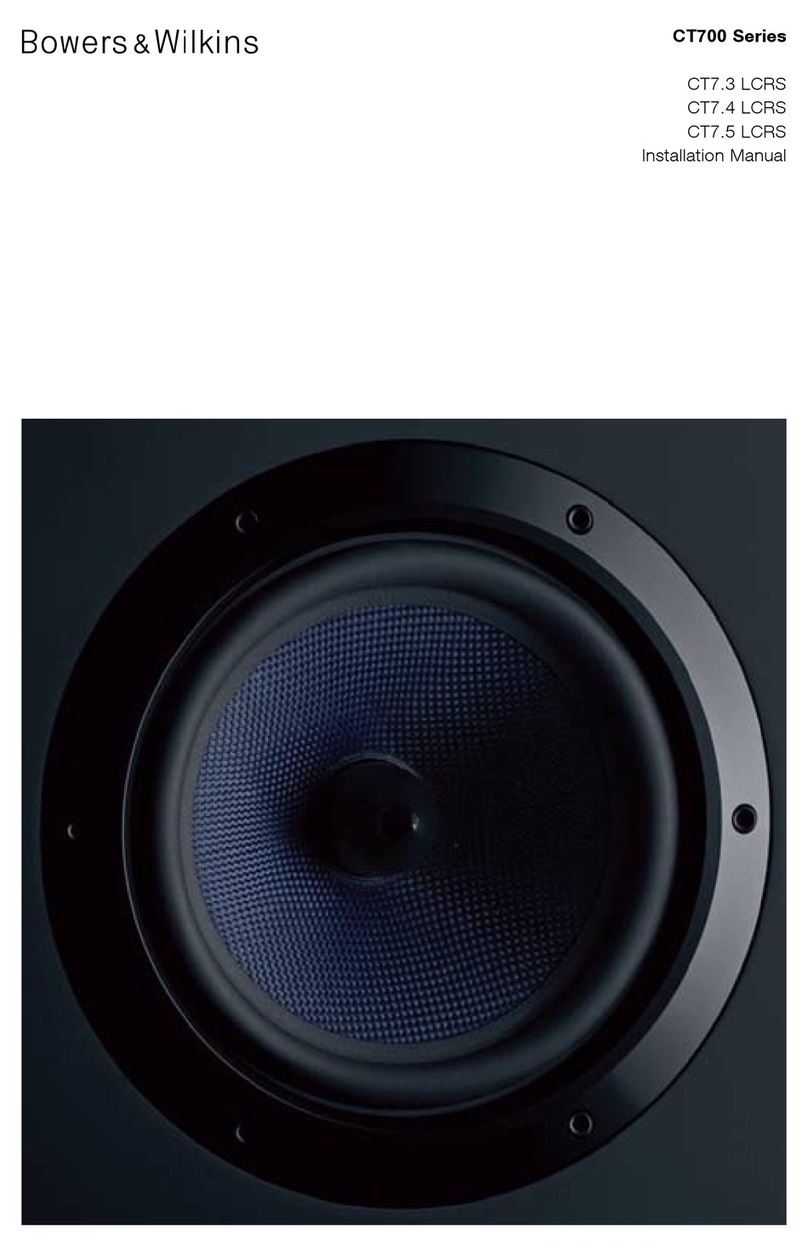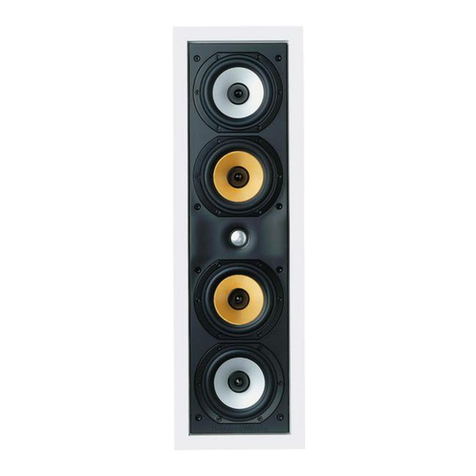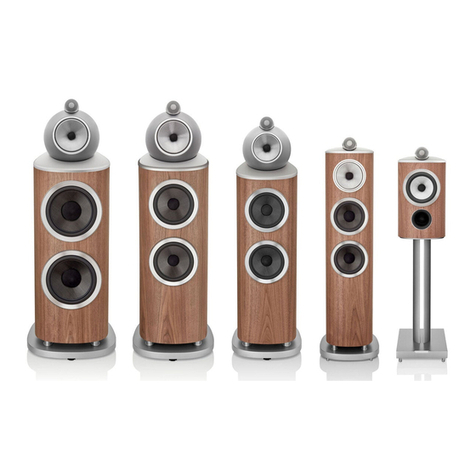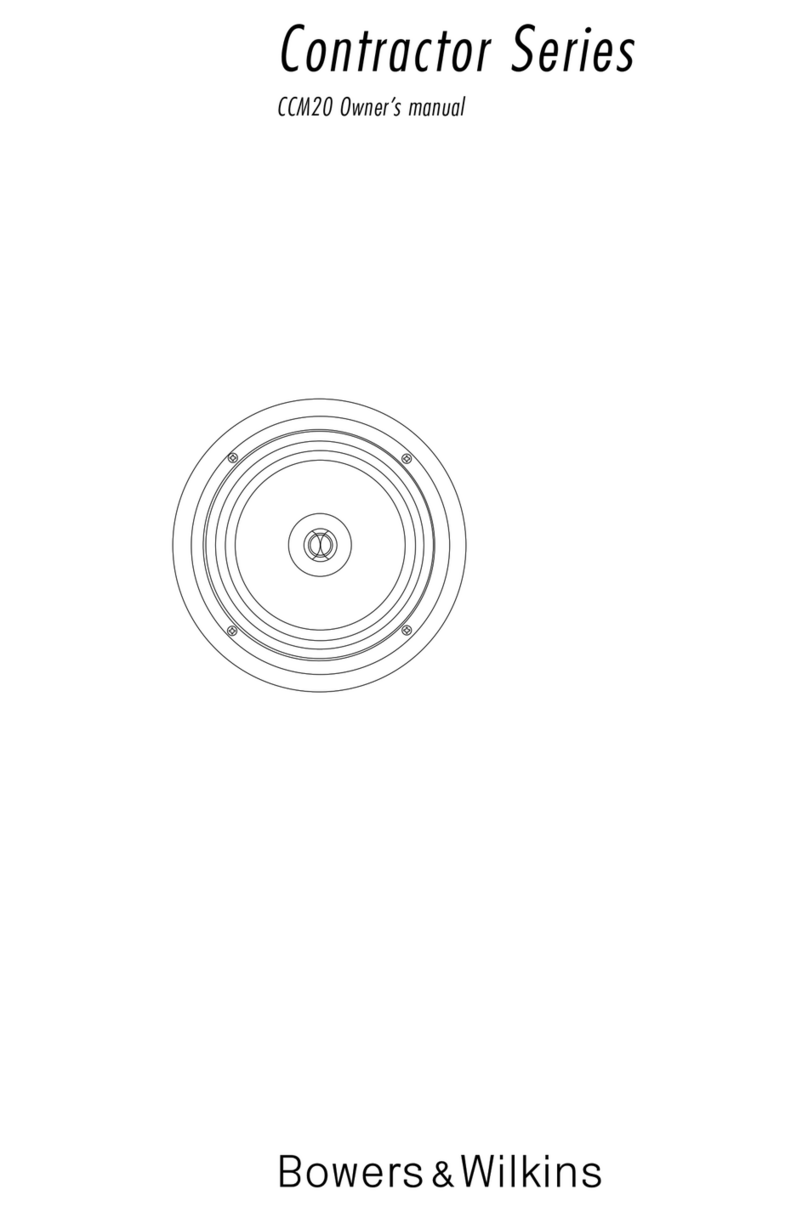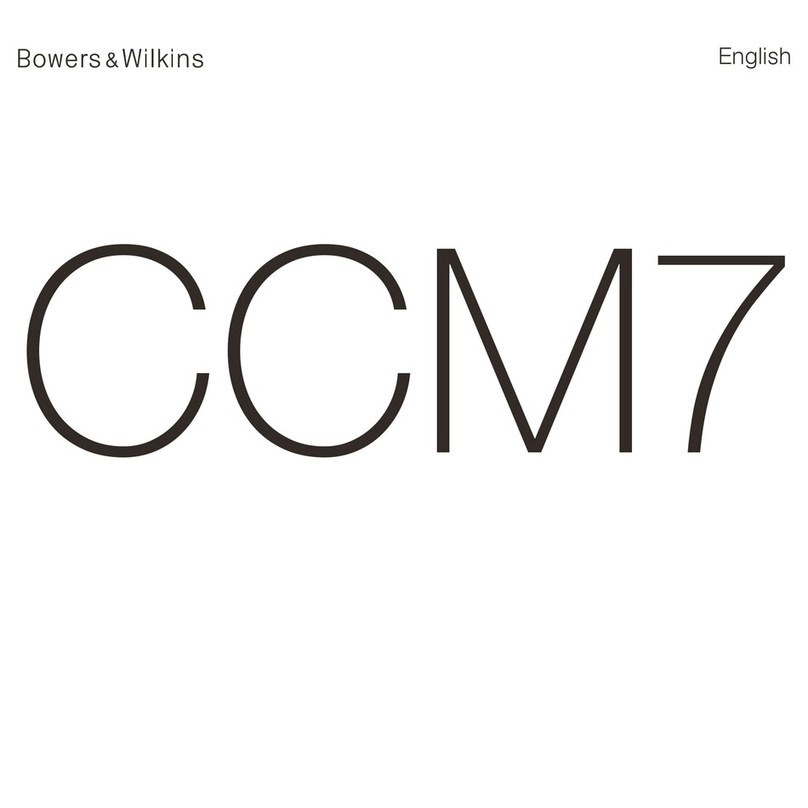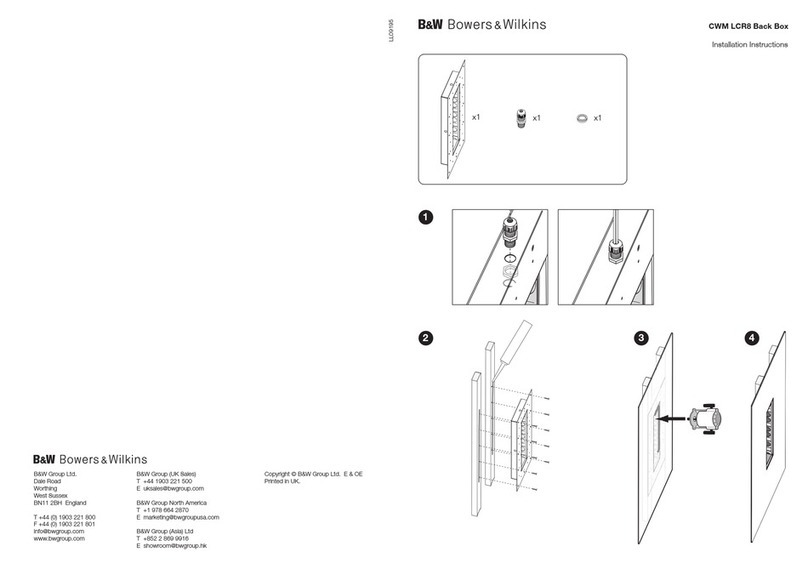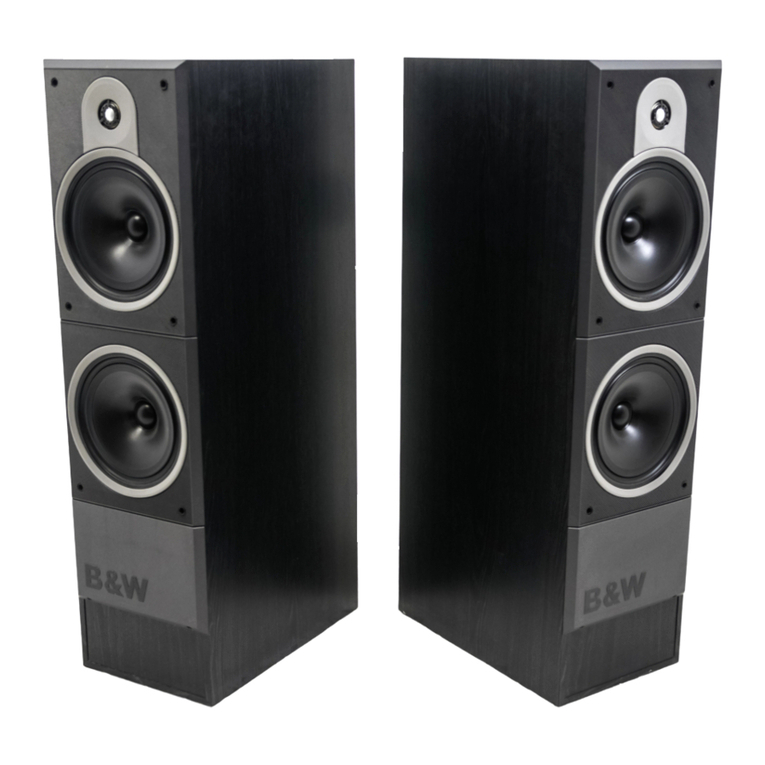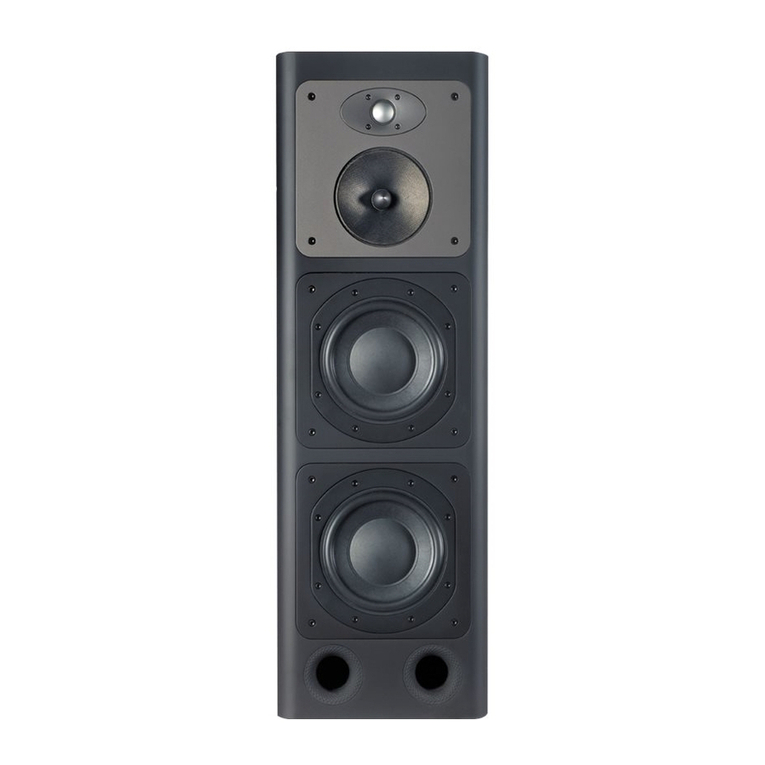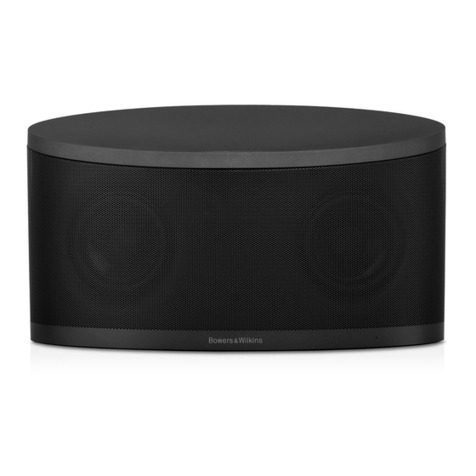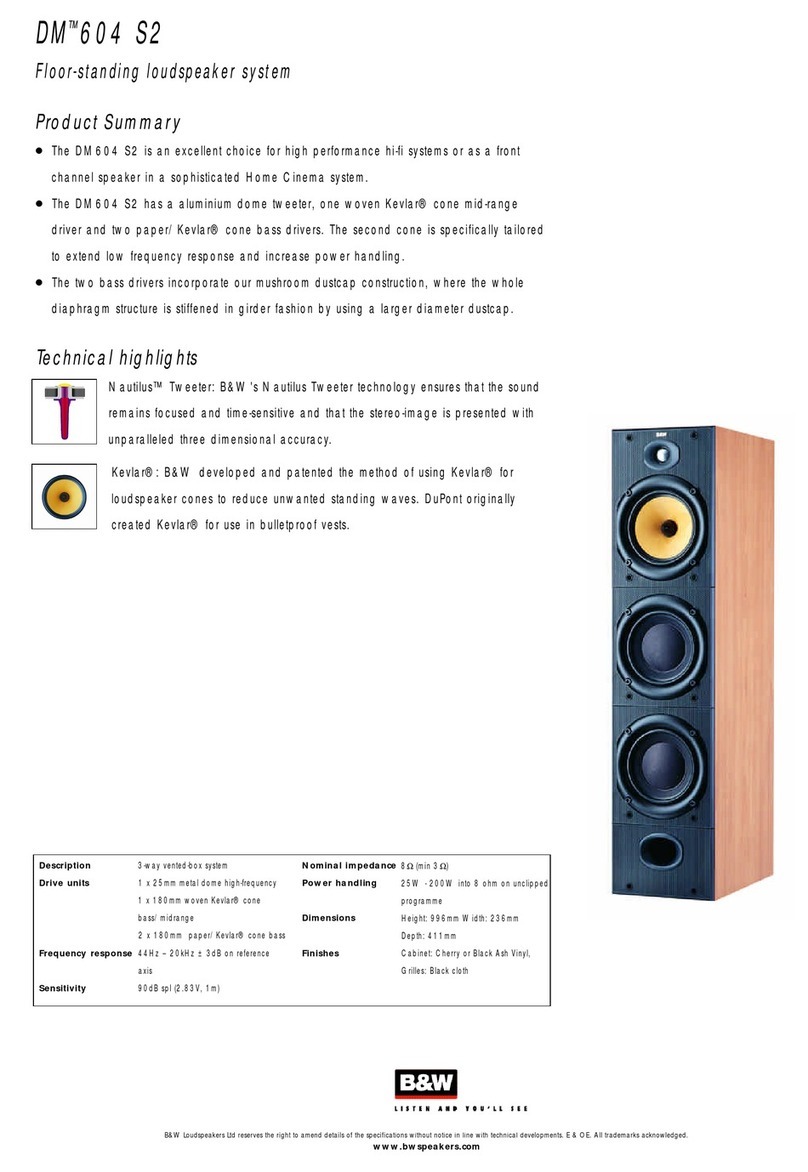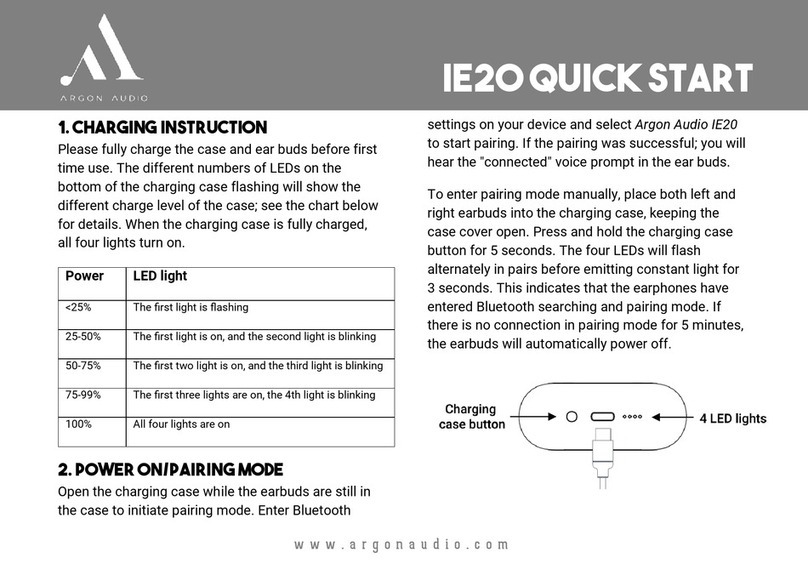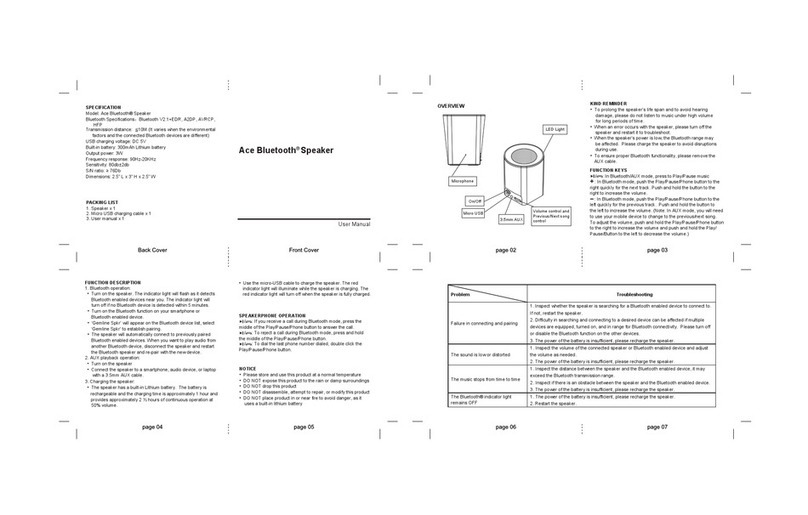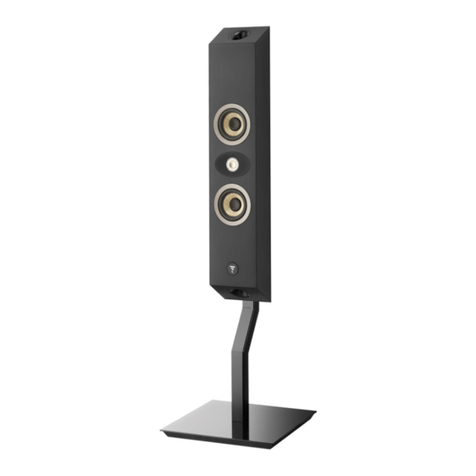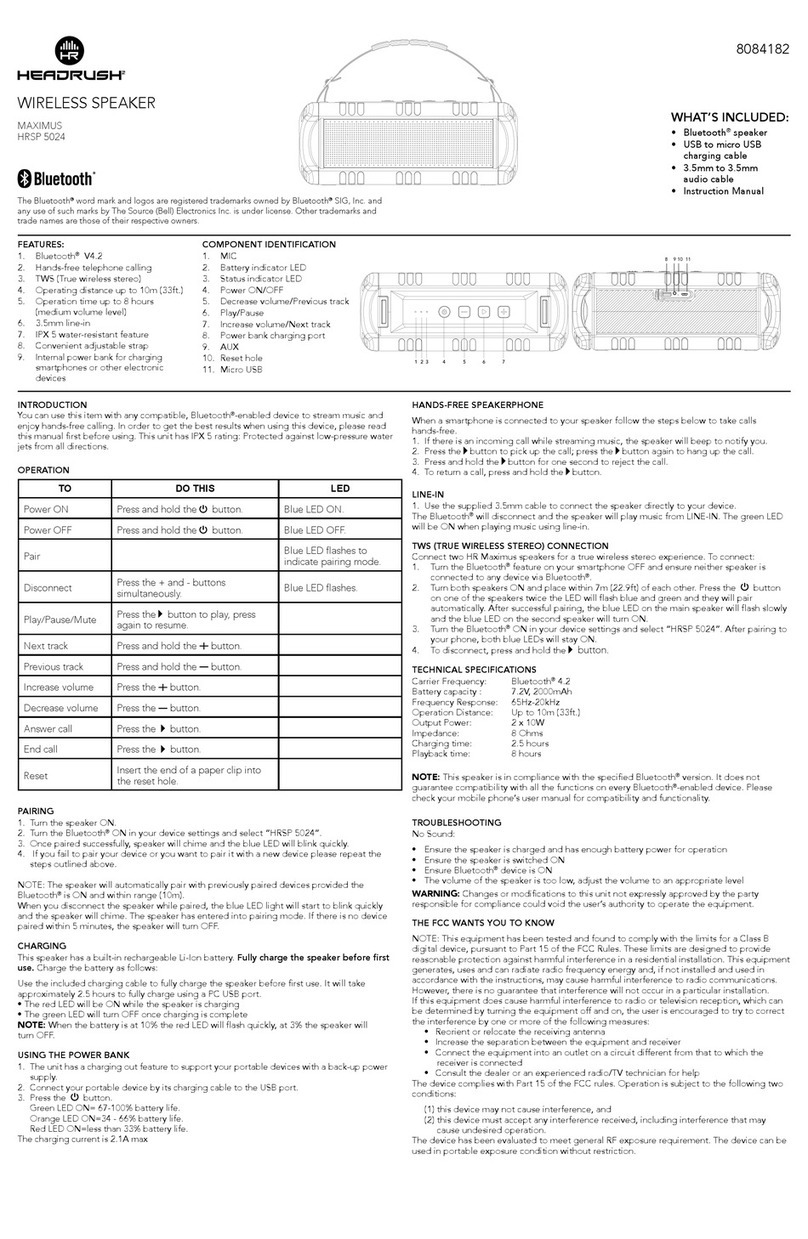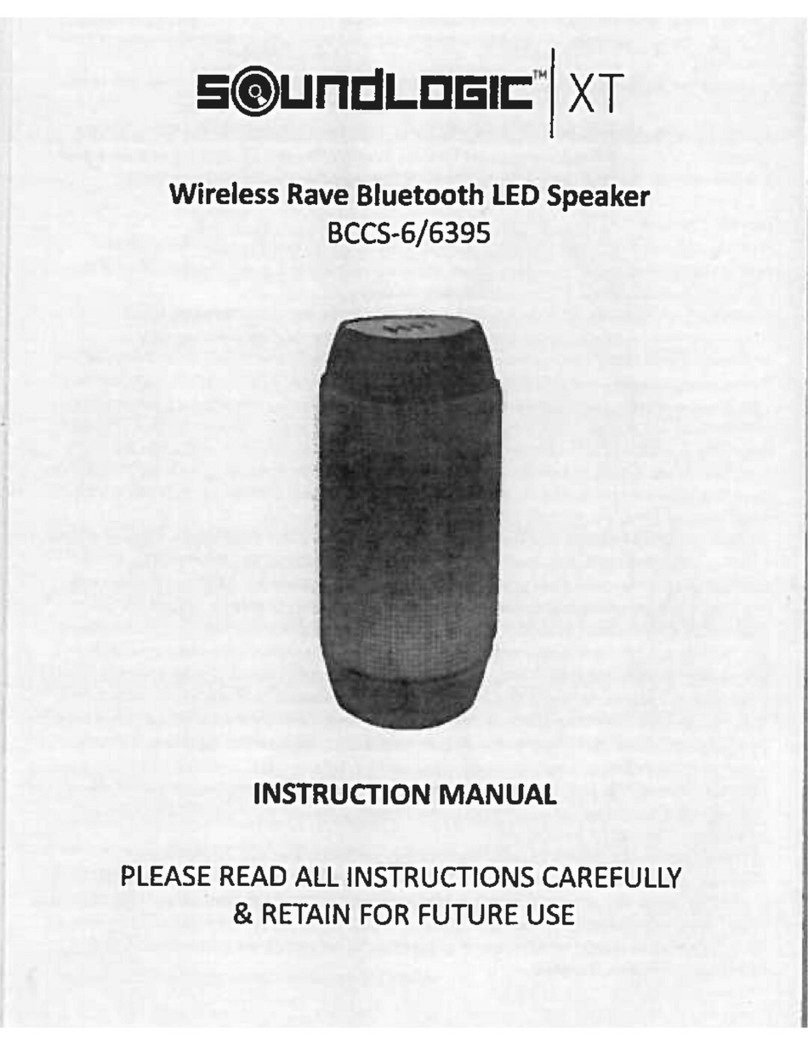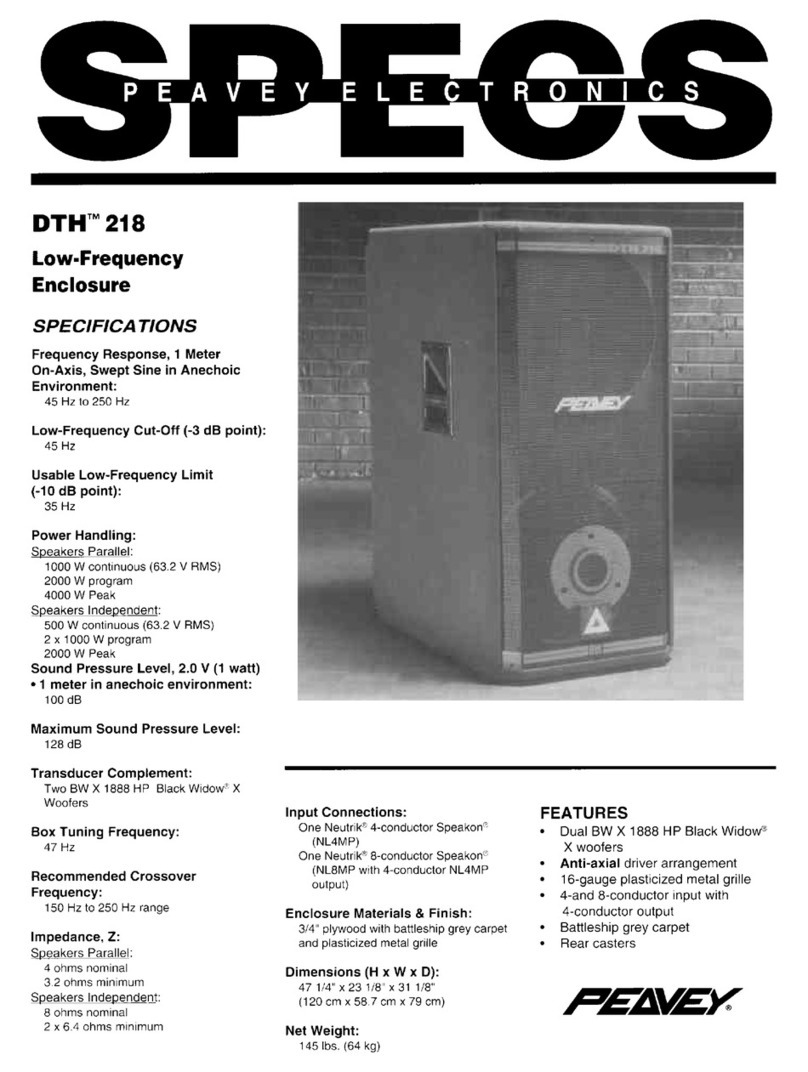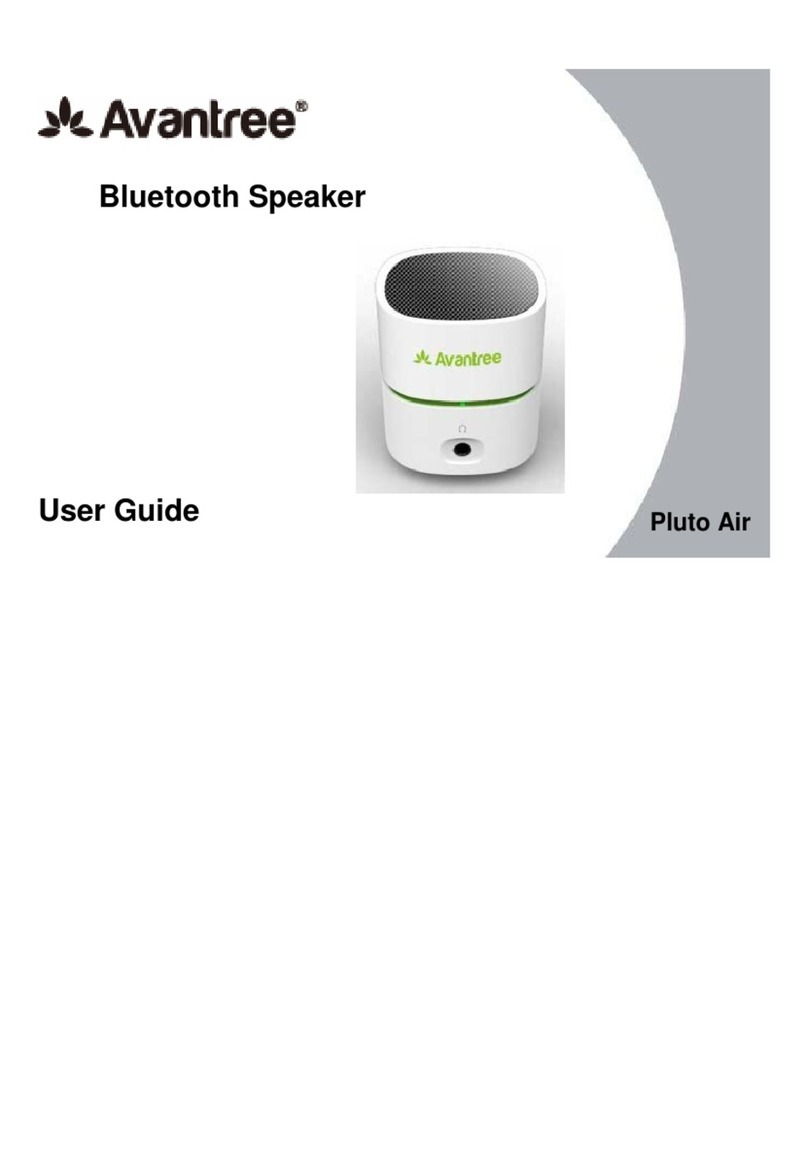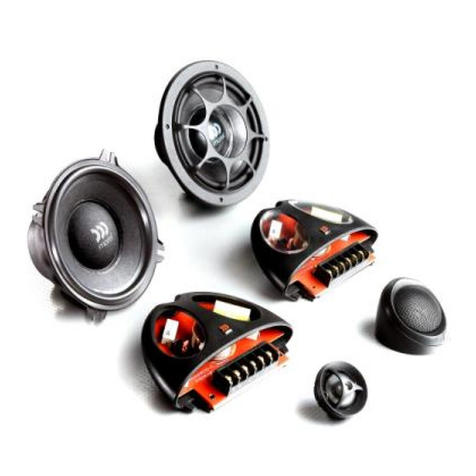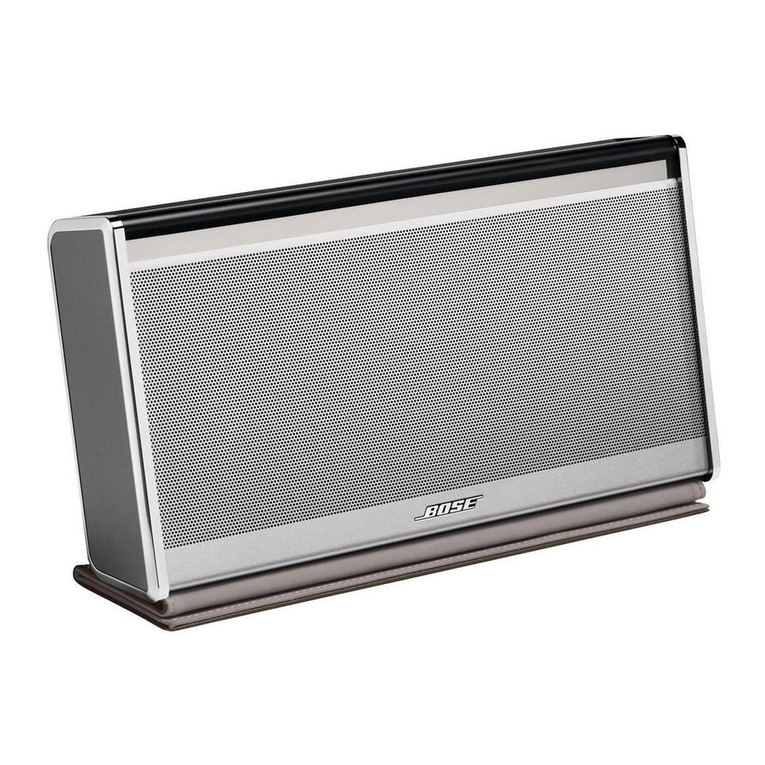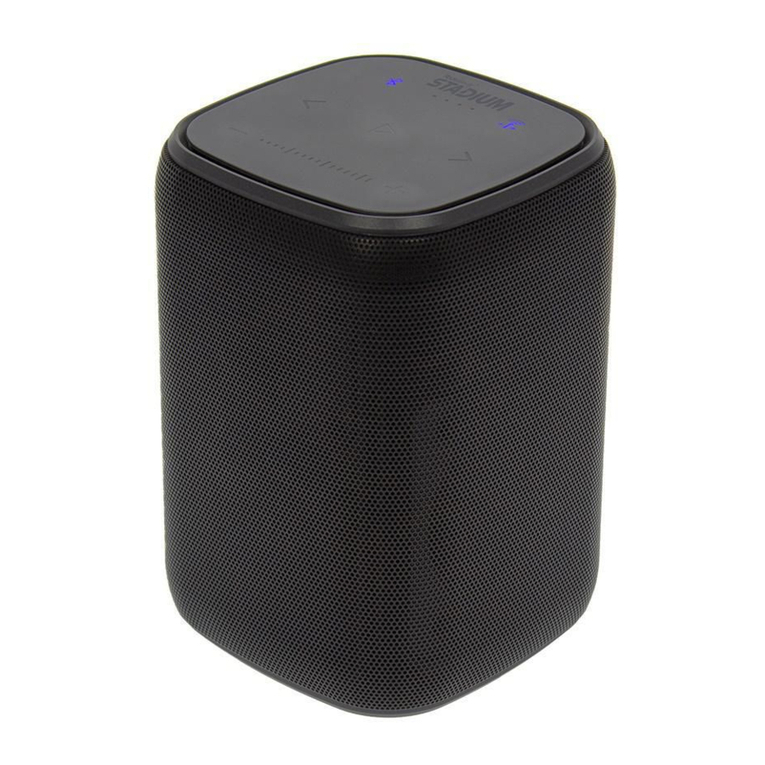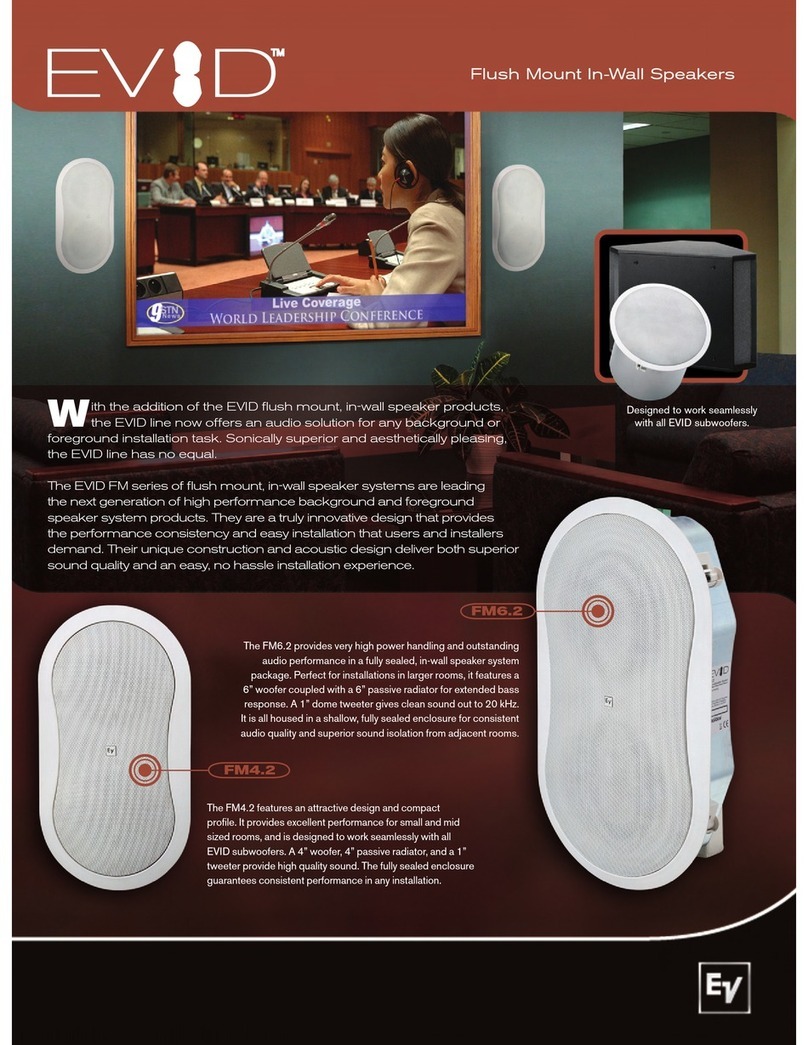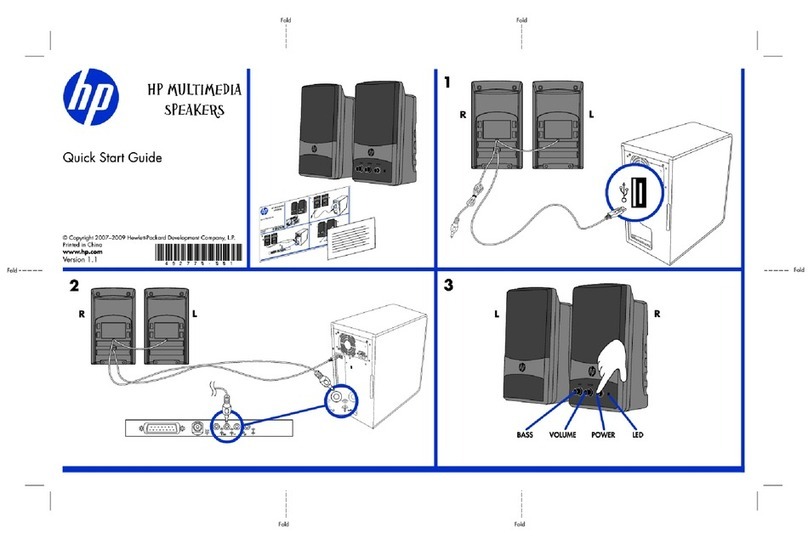Welcome and thank you for choosing Bowers & Wilkins.
Our founder, John Bowers, believed that imaginative design,
innovative engineering and advanced technology were keys that
could unlock the enjoyment of audio in the home. His belief is one
that we continue to share and inspires every product we design.
This is a high performance product that rewards thoughtful
installation, so we suggest that you take some time to read this
manual before you begin. Continue on page 5 Æ
Bienvenue et merci d’avoir choisi Bowers & Wilkins. Notre
fondateur, John Bowers, était persuadé qu’une conception
imaginative, des innovations en terme d’ingénierie et des
technologies parmi les plus avancées, étaient les clés ouvrant les
portes du plaisir de l’écoute à domicile. Ce qu’il croyait fait partie
de ce que nous continuons encore à partager et se retrouve dans
tous les produits que nous concevons aujourd’hui.
Vous disposez d’un produit dont les hautes performances
méritent une installation soignée, par conséquent nous vous
suggérons de consacrer un peu de temps à lire ce manuel avant
de commencer à l’utiliser. Rendez vous à la page 11 Æ
Willkommen bei Bowers & Wilkins. Der Firmengründer John
Bowers war der Meinung, dass ein wunderschönes Design,
eine innovative Konstruktion und ausgeklügelte Technologien
die Schlüssel zu Audio-Entertainment der Extraklasse in Ihrem
Zuhause sind. Wir teilen seine Meinung und jedes von uns
entwickelte Produkt basiert darauf.
Dies ist ein erstklassiges Produkt, dessen Installation und
Setup gut durchdacht werden müssen. Wir empfehlen daher, sich
ein wenig Zeit zu nehmen und diese Bedienungsanleitung vor der
Installation zu lesen. Fortsetzung auf Seite 17 Æ
Benvenuti e grazie per aver scelto un prodotto Bowers
& Wilkins. Il nostro fondatore, John Bowers, era convinto che
design attraente, capacità d’innovare e tecnologie all’avanguardia
fossero fattori vincenti per la riproduzione audio domestica.
Le sue idee sono ancor oggi condivise da noi tutti e fonte
d’ispirazione per ogni nuovo prodotto che realizziamo.
Questo modello è un diffusore di alte prestazioni che merita di
essere installato in maniera scrupolosa. Vi suggeriamo pertanto di
leggere attentamente questo manuale prima di iniziare. Continua
a pagina 35 Æ
Bienvenido y gracias por elegir Bowers & Wilkins.
)NGM!NVDQRMTDRSQNETMC@CNQDRS@A@jQLDLDMSDBNMUDMBHCN
de que el diseño imaginativo, la ingeniería innovadora y la
tecnología avanzada eran las claves a la hora de llevar el disfrute
del sonido a la intimidad del hogar. Una creencia que seguimos
compartiendo y que inspira todos y cada uno de los productos
que diseñamos.
2HRDHMRS@K@@CDBT@C@LDMSDS@MSNK@Ű2BNLNK@Ű2
BNLNK@Ű2DRTMOQNCTBSNPTDNEQDBDTM@ROQDRS@BHNMDR
muy elevadas, por lo que le sugerimos que antes de ponerse
manos a la obra dedique un poco de su tiempo a leer este
manual. Continúa en la página 23 Æ
Bem-vindo e obrigado por escolher a Bowers & Wilkins.
O nosso fundador, John Bowers, acreditava que um desenho
criativo, engenharia inovadora e tecnologia avançada eram as
chaves que poderiam abrir portas para se desfrutar do áudio
em casa. A sua crença é algo que continuamos a partilhar e que
inspira cada produto que desenhamos.
O produto que adquiriu possui elevados padrões de
desempenho que requerem uma instalação cuidadosa, pelo que
recomendamos que leia este manual antes de utilizar o produto.
Continuação na página 29 Æ
